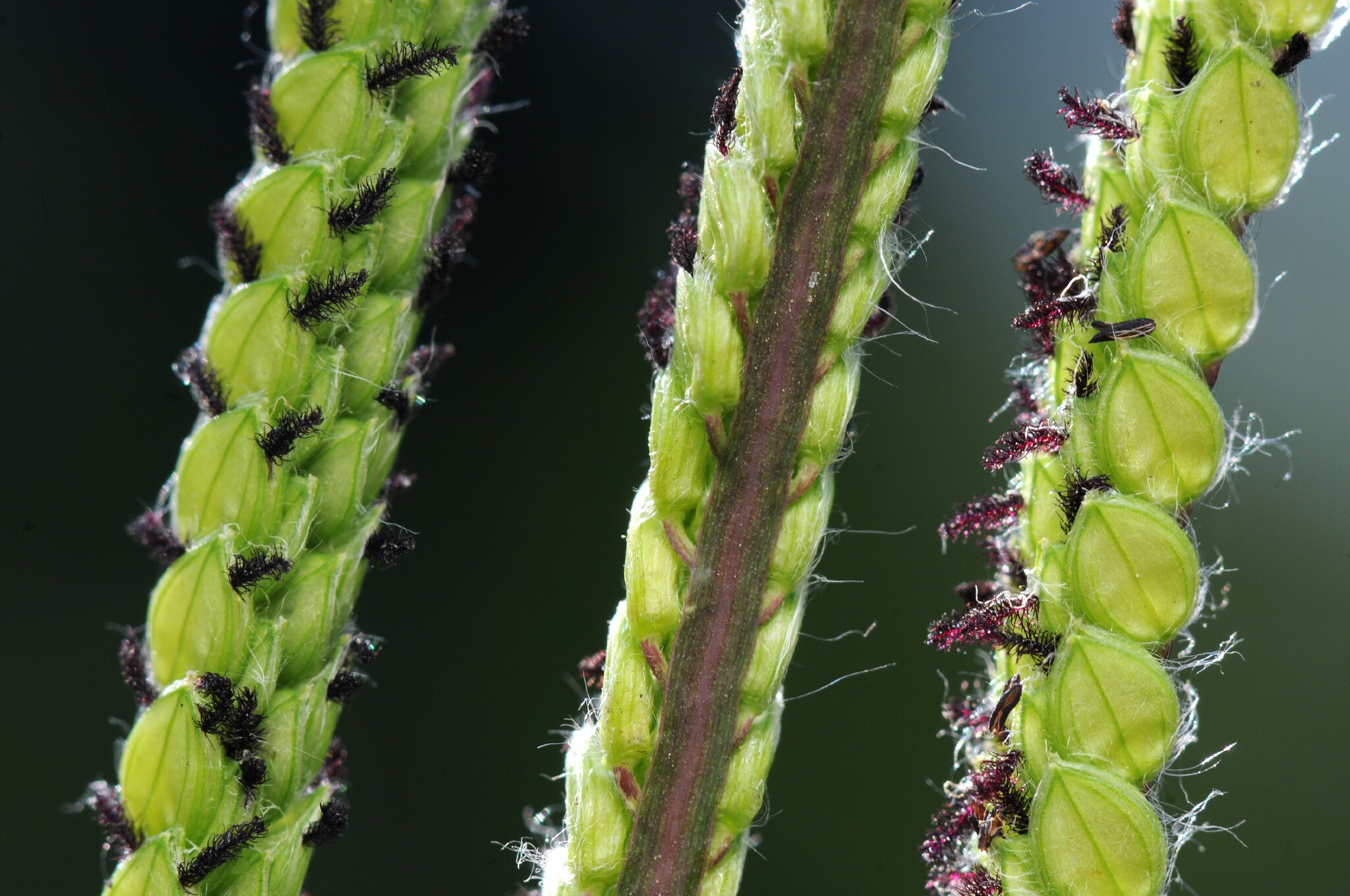
Greek paspalos – millet.
Herbaceous perennial or occasionally annual grasses, decumbent, tufted, stoloniferous or rhizomatous. Leaf blade linear-lanceolate, rolled in bud. Ligule a fringe of hairs. Inflorescence forked, with 1- many 1-sided racemes. Spikelets flattened, in 2 or 4 rows along the undersides of the triangular or flattened axis, awnless, disarticulating below the glumes. Glumes first glume absent or small, second glume and sterile lemma of equal length and concealing the fertile floret. Lower glume 0-1 nerved, upper glume usually 3-5 nerved. Fertile lemma 3-5 nerved, blunt and with inrolled margins. Palea awnless, 2-nerved.
Known to horticulture in Australia through the common lawn weed P. dilatatum. Several species are significant weeds.
Seed.
Many important fodder and grain plants. Sometimes used for erosion control, saltmarsh stabilisation or even as lawn grass.
Flower heads with branches rather windmill-like but arising separately along the axis, the spikelets in 2-4, 1-sided rows.
About 320 species from tropical and warm areas, some species such as P. distichum grow in salty environments.
Source: (2005). Poaceae. In: . Horticultural Flora of South-eastern Australia. Volume 5. Flowering plants. Monocotyledons. The identification of garden and cultivated plants. University of New South Wales Press.
